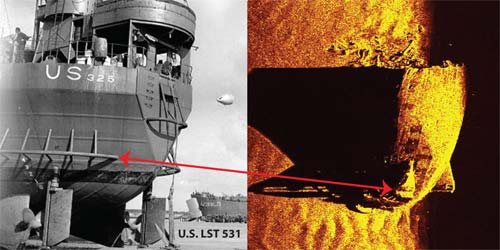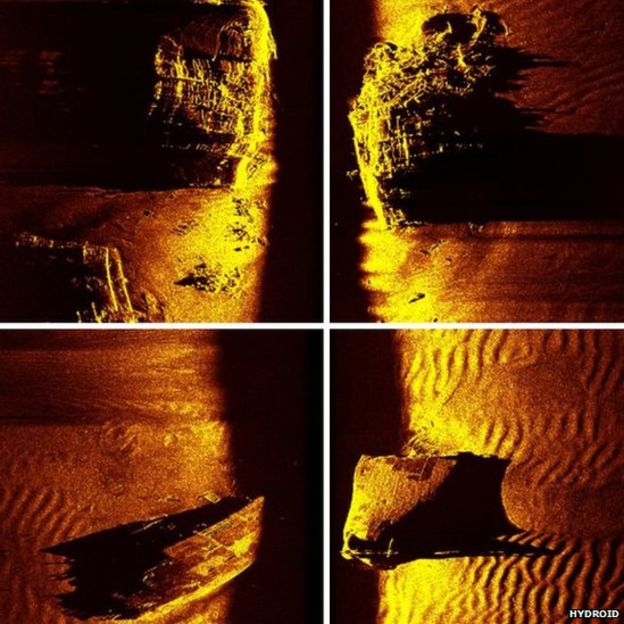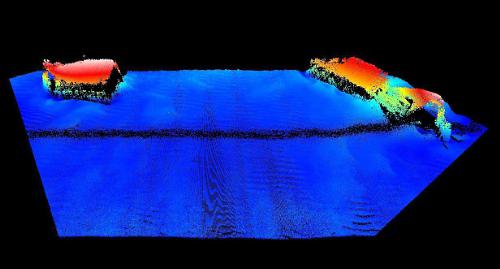
Two World War Two US Navy ships that were sunk of the south west coast of England have been located by researchers using sonar equipment.
The images show the two ships, which were part of a top secret D-Day mission called Exercise Tiger.
The photographs were taken by a deep-sea robot that can take quality images deep on the ocean floor. They show that both the ships are around 50 metres under the water’s surface.
The ships were taking part in a rehearsal exercise ahead of the D-Day landings. But the rehearsal ended up being a terrible disaster and lost more than 800 Allied troops’ lives.
In April 1944, a rehearsal exercise was due to take place with real equipment, weapons and ammunition at Lyme Bay in Devon. However, as eight tank landing ships full of US troops and equipment made its way to Devon, a group of German E-boats engaged with the incoming vessels when they detected heightened radio activity in the area.
The slow moving convoy, due to its heavy loads, was an easy hit for the Germans, and they first targeted the back of the convoy where it was unprotected.

There were a number of complications that prevented the convoy from being better protected, including a Royal Navy destroyer which was meant to escort the vessels but had been taken in for repairs, and a radio frequency error.
As the attack ensued, some of the soldiers were not wearing their lifejackets correctly and others suffered from hypothermia in the freezing water.
It was such a disaster for the Allies that they made sure there was an information blackout and no one knew exactly what had happened until years after when the top secret records became available.
Survivors of the disaster were ordered to not reveal any details about the incident, and if they did they would be liable to court-martial.

When the documents were released and survivors were able to tell their stories they told of a huge attack by German E-boats. Torpedoes exploded on the convoy and set many vessels on fire. Most gave up on trying to save the ships, so they focused on saving themselves and each other, the BBC News reports.
Anyone in the water quickly tried to swim away from the sinking vessels so that they wouldn’t be dragged under by them.
It is estimated that around two thirds of those on board didn’t survive. Their remains and the remains of the convoy still sit at the bottom of the English Channel.